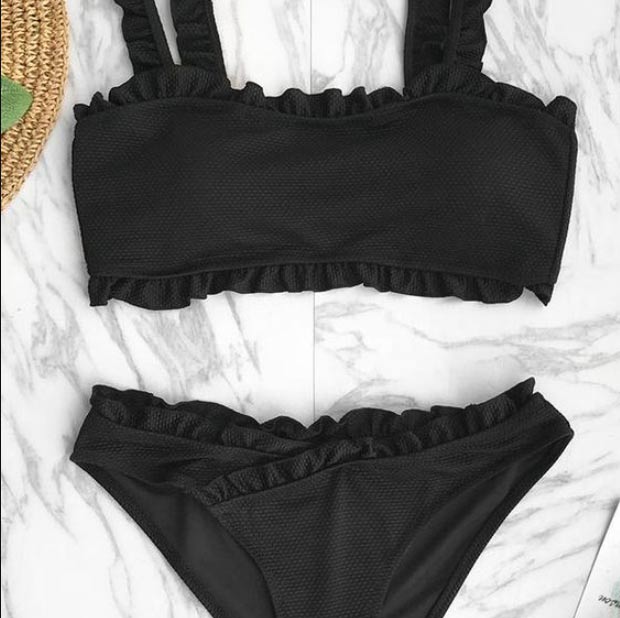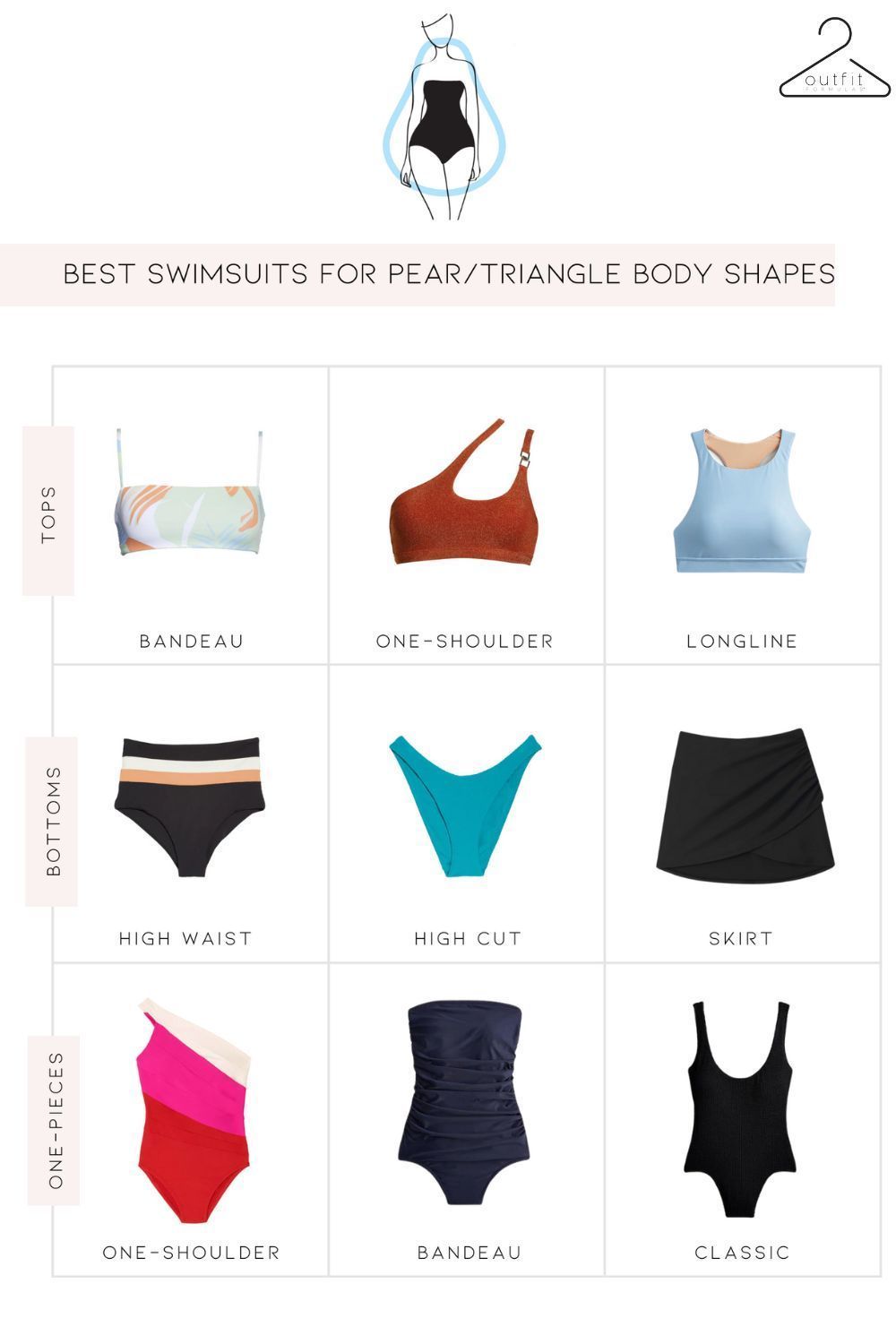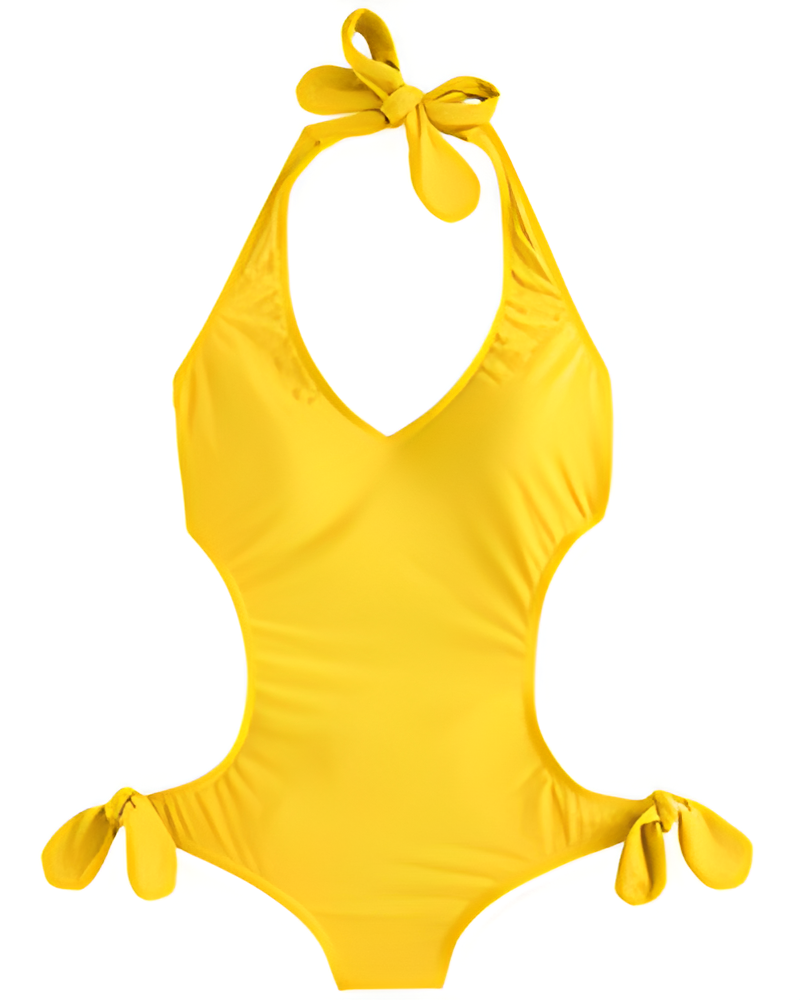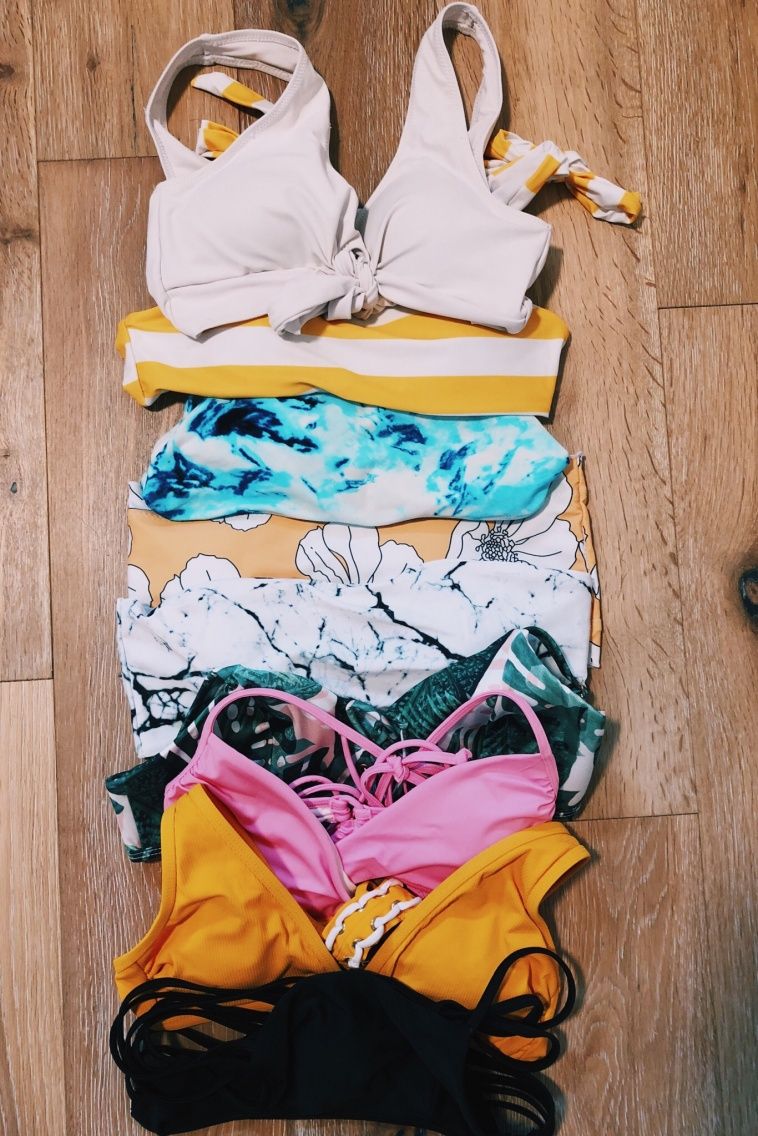Content Menu
● Understanding the Causes of Yellow Stains
● Effective Ways to Remove Yellow Stains
>> Method 1: The Vinegar Soak
>> Method 2: Baking Soda Paste
>> Method 3: Lemon Juice Treatment
>> Method 4: Enzyme-Based Stain Remover
>> Method 5: Oxygen-Based Bleach
● Preventing Yellow Stains: Tips for Swimsuit Care
● Choosing the Right Swimsuit Material
● Taking Care of Swimsuit Fabrics
>> Hand Washing vs. Machine Washing
>> Proper Drying Techniques
● When to Replace Your Swimsuit
● Conclusion
● Frequently Asked Questions (FAQs)
>> Why does my swimsuit turn yellow?
>> Can I use bleach to clean my swimsuit?
>> How often should I wash my swimsuit?
Discover the secret to saying goodbye to stubborn yellow stains on your swimsuits with these easy and effective steps!
Summer is here, and it's time to hit the beach or pool with your favorite swimsuit. However, nothing can dampen your spirits more than pulling out your beloved swimwear only to find it stained with unsightly yellow marks. Whether it's from chlorine, sunscreen, or natural body oils, these yellow stains can be a real eyesore. But don't worry! This comprehensive guide will walk you through various methods to restore your swimsuit to its former glory, ensuring you look your best while enjoying your time in the water.

Understanding the Causes of Yellow Stains
Before we dive into the solutions, it's essential to understand what causes these yellow stains in the first place. Several factors can contribute to the discoloration of your swimsuit:
1. Chlorine: The chemicals used to keep pools clean can react with the fabric of your swimsuit, leading to yellowing over time.
2. Sunscreen and Tanning Oils: These products are designed to protect your skin but can leave oily residues on your swimwear, which can turn yellow.
3. Body Oils and Sweat: Natural oils from your skin and sweat can accumulate in the fabric, causing discoloration.
4. Improper Care: Leaving your wet swimsuit in a bag or not rinsing it properly after use can lead to the buildup of chemicals and oils, resulting in yellow stains.
Now that we know the culprits, let's explore the various methods to tackle these stubborn stains and restore your swimsuit to its original color.
Effective Ways to Remove Yellow Stains
Method 1: The Vinegar Soak
White vinegar is a natural and effective cleaning agent that can help remove yellow stains from your swimsuit. Here's how to use it:
1. Fill a sink or basin with cool water.
2. Add one cup of white vinegar to the water.
3. Submerge your swimsuit in the vinegar solution.
4. Let it soak for 30 minutes to an hour.
5. Gently agitate the fabric every 15 minutes to ensure even treatment.
6. After soaking, rinse the swimsuit thoroughly with cool water.
7. Hang the swimsuit to air dry in a shaded area.
The acidity of the vinegar helps break down the oils and chemicals causing the yellow stains, while also being gentle enough not to damage the delicate fabric of your swimsuit.
Method 2: Baking Soda Paste
Baking soda is another household item that can work wonders on yellow stains. Its mild abrasive properties can help lift the discoloration without harming the fabric. Follow these steps:
1. Mix equal parts baking soda and water to form a paste.
2. Apply the paste directly to the yellow stains on your swimsuit.
3. Gently rub the paste into the fabric using your fingers or a soft-bristled brush.
4. Let the paste sit on the stains for about 30 minutes.
5. Rinse the swimsuit thoroughly with cool water.
6. If necessary, repeat the process for stubborn stains.
7. Once the stains are gone, wash the swimsuit as usual and air dry.

Method 3: Lemon Juice Treatment
The natural bleaching properties of lemon juice can be effective in removing yellow stains from light-colored swimsuits. Here's how to use this citrus solution:
1. Squeeze fresh lemon juice into a bowl.
2. Using a clean cloth or sponge, dab the lemon juice directly onto the yellow stains.
3. Place the swimsuit in direct sunlight for about an hour.
4. The combination of lemon juice and sunlight will help naturally bleach the stains.
5. After an hour, rinse the swimsuit thoroughly with cool water.
6. Wash the swimsuit as usual and air dry.
Note: This method is best for white or light-colored swimsuits, as lemon juice may cause discoloration on darker fabrics.
Method 4: Enzyme-Based Stain Remover
For particularly stubborn yellow stains, an enzyme-based stain remover can be highly effective. These products are designed to break down organic compounds, making them ideal for tackling body oil and sunscreen stains. Follow these steps:
1. Purchase an enzyme-based stain remover from your local store or online.
2. Apply the stain remover directly to the yellow areas of your swimsuit.
3. Gently work the product into the fabric using your fingers or a soft brush.
4. Let it sit for the amount of time specified on the product instructions.
5. Rinse the swimsuit thoroughly with cool water.
6. Wash the swimsuit as usual and air dry.
Always test the stain remover on a small, inconspicuous area of the swimsuit first to ensure it doesn't cause any discoloration or damage to the fabric.

Method 5: Oxygen-Based Bleach
For white or light-colored swimsuits, oxygen-based bleach can be an effective solution for removing yellow stains. Unlike chlorine bleach, oxygen bleach is gentler on fabrics and safer for colored swimwear. Here's how to use it:
1. Fill a sink or basin with cool water.
2. Add the recommended amount of oxygen-based bleach according to the package instructions.
3. Submerge the swimsuit in the solution.
4. Let it soak for 1-2 hours, or overnight for stubborn stains.
5. Gently agitate the fabric every 30 minutes to ensure even treatment.
6. After soaking, rinse the swimsuit thoroughly with cool water.
7. Wash the swimsuit as usual and air dry.
Remember to always follow the care instructions on your swimsuit's label and test any cleaning solution on a small, hidden area first.
Preventing Yellow Stains: Tips for Swimsuit Care
While knowing how to remove yellow stains is important, preventing them in the first place is even better. Here are some tips to keep your swimsuit looking fresh and stain-free:
1. Rinse Immediately: After each use, rinse your swimsuit thoroughly with cool water to remove chlorine, salt, and other chemicals.
2. Hand Wash: Whenever possible, hand wash your swimsuit using a mild detergent specifically designed for delicate fabrics.
3. Avoid Heat: Never use hot water to wash your swimsuit, and always air dry it in a shaded area. Heat can break down the fabric and set in stains.
4. Rotate Swimsuits: If you swim frequently, rotate between multiple swimsuits to give each one time to fully dry and recover between uses.
5. Apply Sunscreen Carefully: When applying sunscreen, let it fully absorb into your skin before putting on your swimsuit to minimize transfer.
6. Store Properly: Never store a damp swimsuit in a plastic bag. Instead, let it air dry completely before storing it in a cool, dry place.
Choosing the Right Swimsuit Material
The material of your swimsuit can also play a role in its susceptibility to yellow stains. Some fabrics are more resistant to discoloration and easier to clean than others. Here are some popular swimsuit materials and their properties:
1. Nylon: Known for its durability and resistance to chemicals, nylon is a popular choice for swimwear. It's less likely to yellow and is relatively easy to clean.
2. Polyester: This synthetic fabric is resistant to stretching and shrinking, making it a good choice for swimwear. It's also less prone to fading and yellowing.
3. Spandex/Lycra: Often blended with other materials, spandex provides stretch and shape retention. While it's comfortable, it can be more susceptible to damage from chlorine and oils.
4. Polyamide: Similar to nylon, polyamide is durable and resistant to chemicals. It's often used in high-quality swimwear.
5. Chlorine-Resistant Fabrics: Some swimsuits are made with specially treated fabrics that are more resistant to chlorine damage and discoloration.
When shopping for a new swimsuit, consider opting for materials that are known for their durability and resistance to yellowing. This can help extend the life of your swimwear and keep it looking fresh for longer.

Taking Care of Swimsuit Fabrics
Taking care of swimsuit fabrics is super important if you want your favorite swimwear to last a long time. Fabrics can easily get damaged, and if you don't take proper care, your swimsuit might not look as great or fit as well over time. Let's learn how to care for our swimsuits so they can keep looking fresh and new!
Hand Washing vs. Machine Washing
First, let's talk about washing your swimsuits. Hand washing is generally better than machine washing. When you wash by hand, you are gentle with the fabric. You can use cool water and a little bit of mild detergent to clean it. This way, you help prevent stretching and wear, keeping the fabric in good shape. Machine washing can be rough. The spinning can stretch the swimsuit fabric and cause it to lose its shape. If you have to use a machine, make sure to put your swimsuit in a mesh bag and choose a gentle cycle.
Proper Drying Techniques
After washing, how you dry your swimsuit is also really important. Avoid wringing or twisting it, as this can stretch the fabric. Instead, lay your swimsuit flat on a clean towel and roll the towel up gently to soak up extra water. Then, lay it flat to dry away from direct sunlight. Sunlight can fade your swimsuit colors and make it look old quickly. Proper drying techniques will help keep your swimsuit looking bright and fitting well for many swims. Remember, taking care of swimsuit fabrics means treating them gently!
When to Replace Your Swimsuit
Despite your best efforts, there may come a time when it's best to retire your old swimsuit and invest in a new one. Here are some signs that it might be time for a replacement:
1. Stretched Out Fabric: If your swimsuit has lost its shape and elasticity, it's probably time for a new one.
2. Faded Color: While some fading is normal over time, significant color loss can indicate that the fabric is breaking down.
3. Thinning Material: If you can see through the fabric when it's stretched, it's likely worn out and may not provide adequate coverage.
4. Persistent Odor: If your swimsuit retains an unpleasant smell even after washing, it may be harboring bacteria that are difficult to remove.
5. Visible Damage: Tears, holes, or unraveling seams are clear signs that your swimsuit has reached the end of its life.
Remember, a well-maintained swimsuit can last for several seasons, but even the best-cared-for swimwear will eventually need to be replaced.

Conclusion
Yellow stains on swimsuits can be frustrating, but with the right techniques and a little patience, you can often restore your favorite swimwear to its original color. From natural remedies like vinegar and lemon juice to more targeted solutions like enzyme-based stain removers, there are multiple options to tackle those stubborn yellow marks.
Remember that prevention is key. Proper care and maintenance of your swimsuit can go a long way in preventing yellow stains from forming in the first place. Rinse your swimsuit after each use, hand wash with care, and store it properly to extend its life and keep it looking fresh.
By following the tips and methods outlined in this guide, you'll be well-equipped to keep your swimsuits in top condition, ensuring you look and feel your best every time you hit the beach or pool. So go ahead, dive in, and enjoy your summer adventures with confidence, knowing that you have the knowledge to keep your swimwear looking fantastic all season long!
Frequently Asked Questions (FAQs)
People often have questions about swimsuit care and how to deal with those annoying yellow stains. Here are some common questions and answers that can help you keep your swimsuit looking its best.
Why does my swimsuit turn yellow?
Your swimsuit can turn yellow for a few reasons. One big reason is chlorine damage. Chlorine is found in most pools, and when it mixes with sweat or body oils, it can cause yellow stains. Also, sunscreen can stick to the fabric and lead to discoloration. So, it's important to rinse your swimsuit after swimming to help prevent these stains.
Can I use bleach to clean my swimsuit?
No, you should not use bleach on your swimsuit. While bleach can remove stains, it can also damage the fabric. Instead, use safer alternatives like vinegar, baking soda, or lemon juice. These can help clean your swimsuit without causing harm.
How often should I wash my swimsuit?
It's a good idea to wash your swimsuit after every use, especially if you've been swimming in a chlorinated pool. This helps keep it clean and fresh. If you swim often, washing it regularly can help maintain its colors and prevent yellow stains. Remember, good cleaning swimsuits practices can really make a difference!






































